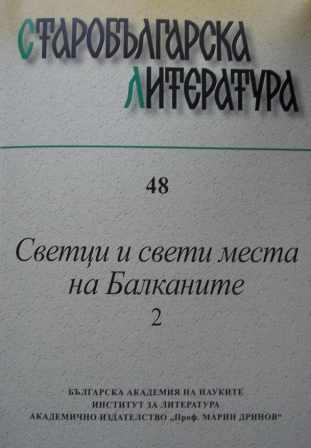Култовете към жените-светици в Средновековна България: два компаративни прочита
The Local Cults of the Women Saints in Medieval Bulgaria: Two Comparative Approaches
Author(s): Angelina Angusheva-TihanovaSubject(s): Language studies
Published by: Институт за литература - БАН
Summary/Abstract: The article offers a comparative typology of the cults of local women saints in Bulgaria, Serbia and Russia during the Middle Ages. Further, it analyzes the transformations of traditional Marian imagery applied in hagiographic presentations of these saints (e.g. the employment of the Virgin’s Dormition narrative in the vita of St Helene of Anjou by Archbishop Danilo II; the Marian symbols in the vita of St Parasceve/Petka by Patriarch Euthymios). The article examines the use of the theological trope of Christ’s Bride in South Slavic hagiography and its modifications in St Olga’s Vita from Stepennaia kniga in order to establish the changes in perception of these cults articulated through hagiographical convention. The comparison showed that, with the exception of the commemoration of Kievan Princess Olga, the cults of the local women saints in the Orthodox Slavic countries were relatively late formations, established from the thirteenth century onwards. In medieval Serbia the women rulers were the only social group from which local women saints emerged, unlike Bulgaria where the only type of locally celebrated female sainthood was the anchoretic one. In this respect medieval Russia presented a greater variety (there were holy princesses, nuns, and even town anchoress, and martyrs). Most of these cults in Serbia and Russia appeared in the field of direct interaction between royal and monastic milieu, and the real participation of the saint in both contexts, her dual identity was almost an indispensible precondition for her sainthood. different dynamics in which strict ascetic holiness was additionally used by the institutions of power. Unlike the Russian and Serbian cults, Bulgarian were not based on ethno-localism, they were imported from outside and domesticated, but either because these ascetic cults articulated better the Hesychast ideology that dominated the epoch, or because the cults were actively developed in Bulgarian capital, they were the only one to cross the state boundaries and become Pan-Orthodox heavenly protectors.
Journal: Старобългарска литература
- Issue Year: 2013
- Issue No: 48
- Page Range: 129-156
- Page Count: 28
- Language: Bulgarian
- Content File-PDF

